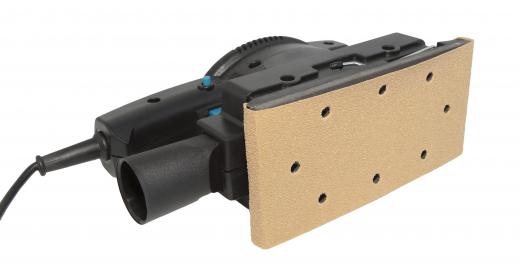Rubber backing is a material attached to the back of sanding disks and pads. The backing provides a cushion for the sandpaper. The cushion allows the sanding disk or pad to follow imperfections in the surface of whatever is being sanded without making a gouge or leaving a burn. By applying a rubber backing to the sander or grinder's pad, the finished product is much flatter and smoother than one finished with a non-rubber backing.
Many power sanders and grinders utilize a foam rubber backing which fastens directly to the power tool's pad. This backing pad incorporates a hook and loop system of sanding pad attachment. The sanding pad is attached to the foam pad by pressing it to the fabric on the pad and smoothing out any wrinkles. The foam contours to any fluctuations in the rough surface and also aids the sanding pad in remaining cool.

When using a sander without a rubber backing pad, the finished surface may contain burns as well as waves and cuts. By eliminating the cushion of the rubber pad, the minor inconsistencies of twisting and turning the sander show in the finish as high and low spots. These inconsistencies can often be impossible to remove without a rubber-backed sanding pad. The rubber backing allows the sanding pad to float over the surface and even out the finish.

Professional automobile detailing crews use the rubber pads in all aspects of waxing and polishing. The rubber allows the soft buffing pads to apply wax and polish more evenly and without added heat. The softer pad support also helps to eliminate swirl marks in the final buffing. As the buffing pad glides over the vehicle's surface, the rubber backing on the polishing pad eliminates the dipping and rising found in a similarly equipped polisher with no rubber pad.

Palm-type orbital sanders also utilize the rubber pads to aid in the elimination of sawdust or paint residue beneath the sanding pad. As the palm sander is worked across the work surface, tiny particles that are removed from the finish by the sandpaper begin to work out from under the sanding pad. The rubber pad allows these particles to move by allowing the sandpaper to rise up and out of the way. With no rubber pad, the sandpaper cannot rise up and the particles are burned into the surface of the work piece. This creates much more work during the finishing process.
